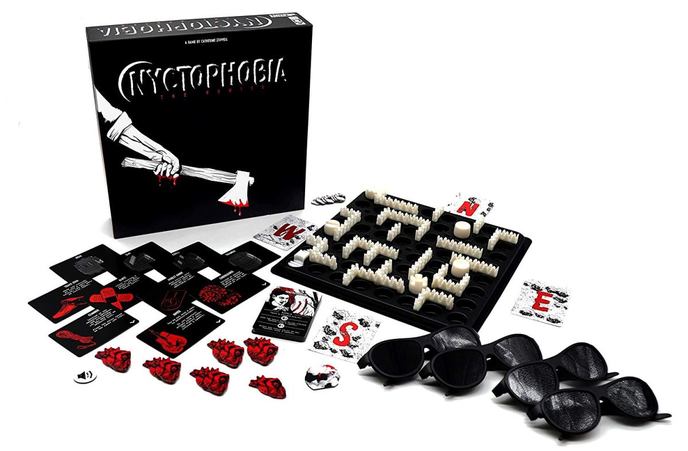Nyctophobia‘s Novel New Mechanic Doesn’t Have a Lot of Replay Value

Nyctophobia, a new one-versus-many game from Pandasaurus, might have the most unusual back story of any board game I’ve ever seen. Designer Catherine Stippell created the game while still a teenager after playing games with her family and modifying the rules of those games so her blind uncle could play along, which drove her to design a game where being unable to see the board was part of the rules and even integrated into the game’s theme. Her background alone makes her unusual in board gaming—nearly all new board games are designed by men, and if you see a woman’s name in the credits, it’s far more likely to be as the artist rather than the designer, and most designers are older than Stippell was when she first conceived Nyctophobia. And this game manages something I also rarely see in board games: A novel mechanic, something that stands out when every other game out there starts out with players collecting wood.
Nyctophobia’s one-versus-many format includes multiple themes, but the core concept is simple: One player plays the bad guy, a killer or a mage or a vampire, while the others are all trying to escape the forest where they’ve become lost … but those players wear blackout glasses provided with the game so that they can’t see the board at all, playing by touch and by talking to the other players. The board’s modular components are intentionally crude so that their shapes are easy to distinguish by feel; the trees, which give the board a maze-like aspect, are sharp on top, while each player token has a different shape on top to make it easy to know whose token is whose. The villain is the only player who can see what’s going on; that player sets up the board and essentially plays the Game Master, while also playing his/her character, chasing the other players and attacking them when they end up in adjacent spaces.
Game play is straightforward once you get adjusted to the idea that you can’t see the board. Each of the players on the team side gets to take two actions, usually moving two spaces on the board, for which the villain takes the player’s hand and places one finger on that player’s piece. That player can then feel around his/her piece one space in any direction to determine what moves are legal and to help build a mental picture of the board, announcing it so the rest of the team can also try to get a sense of what the board looks like. (There are multiple board setups given in the rule book and more on Pandasaurus’s website.) Each player gets a specific role card that gives him/her a unique power, and each player also has a rock to throw to try to create a distraction for the villain or, if the player is attacked, to push the villain back and give the player a little extra time to escape.
